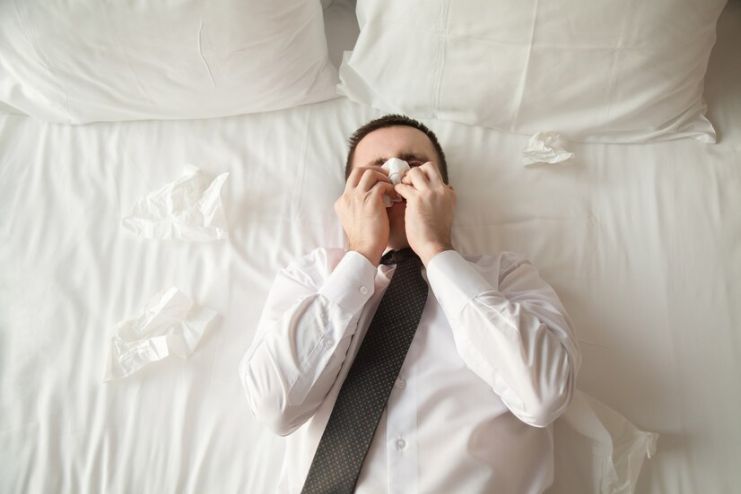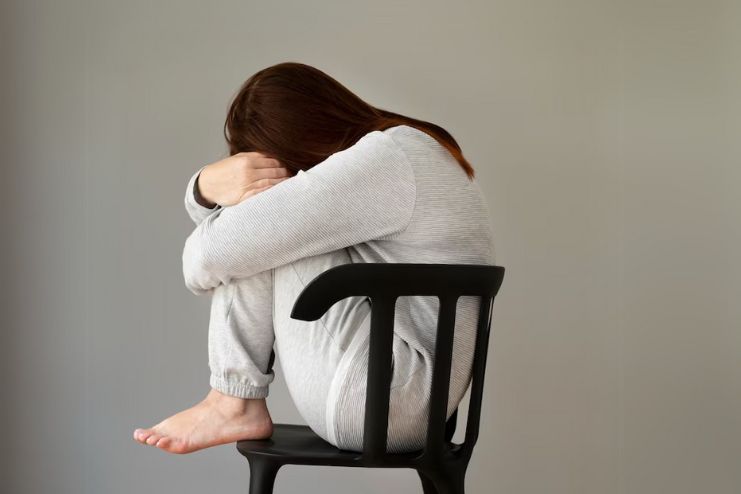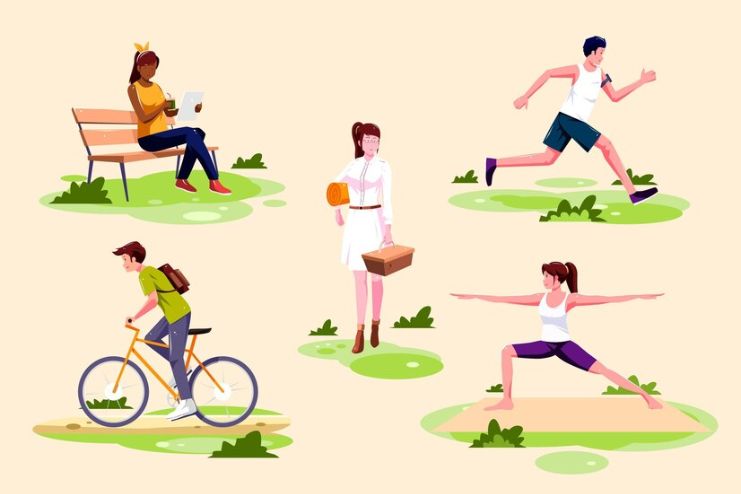Affiliate Disclaimer
Some links in this article are affiliate links. We may earn a small commission if you make a purchase through these links, at no extra cost to you. We only recommend products we find useful to our readersIn today’s fast-paced world, emotional burnout and depression have become two of the most common problems, causing confusion and misdiagnosis. Despite these two conditions posing great challenges to mental health and daily functioning, they are due to different causes and show different symptoms.
Emotional burnout results primarily from long stress and overwhelm associated with excessive burdens on the job or in caring for others. It is generally characterized by emotional exhaustion, cynicism, and reduced performance.
Depression is a more pervasive mood disorder that affects your emotional state, leading to persistent sadness, hopelessness, and disinterest in your life. Knowing the difference between the two conditions helps in proper management and treatment.
In this article, we will discuss the main differences between emotional burnout and depression so that you know what you are going through.
What is Emotional Burnout?

Emotional burnout is a more emotional exhaustion usually characterized by being drained from prolonged exposure to stressors in your life or work. It results from accumulated stress and can manifest when you feel overwhelmed by the circumstances or situations leading to hopelessness and feelings of powerlessness over life.
This chronic emotional fatigue usually indicates the first sign of the beginning of burnout, which can affect not only the well-being of your mind but also your body.
Symptoms
Emotional burnout comes with a variety of emotional and physical symptoms. You may experience:
- Lack of motivation
- Trouble sleeping
- Irritability
- Physical fatigue
- Feelings of hopelessness
- Absentmindedness and apathy
- Headaches and changes in appetite
- Nervousness and difficulty concentrating
- Irrational anger
- Increased cynicism or pessimism
- Sense of dread or depression
Causes
Common triggers include:
- High-Pressure Jobs: Occupations like healthcare, education, and emergency services often cause intense responsibilities that can lead to burnout.
- Intense Schooling: The demands of rigorous academic programs can cause a significant emotional strain.
- Long Working Hours: Consistently working for extended hours, especially in an unfulfilling job, can cause exhaustion.
- Personal Life Stress: Responsibilities such as raising children, financial struggles, caregiving for loved ones, or enduring prolonged stress can contribute to emotional fatigue.
What is Depression?

Depression, also known as major depressive disorder, is a very serious mental illness. It influences all feelings, thoughts, and actions involved in shaping your perception of the world.
Almost 29% of all adults have had depression at some point in their lives, and around 18% (R) of all adults have had an episode in the past year. Women and younger adults are more prone to depression. Such depression typically manifests between the late teenage years and mid-20s.
Symptoms
- Persistent sadness, irritability, or hopelessness
- Loss of interest in previously enjoyed activities
- Significant changes in appetite or weight
- Sleep disturbances (too little or too much)
- Fatigue or decreased energy
- Observable changes in movement or speech
- Feelings of worthlessness or excessive guilt
- Difficulty concentrating or making decisions
- Thoughts of death or suicide
Risk Factors
Risk factors include:
- Biochemical: Imbalances in brain chemicals (e.g., serotonin, dopamine).
- Genetic: Family history increases risk. Identical twins have a 70% chance if one is diagnosed.
- Personality: Traits like low self-esteem and pessimism may contribute.
- Environmental: Exposure to violence, neglect, abuse, or poverty.
Key Differences Between Burnout and Depression

- Emotional State:
-
- Burnout: Temporary emotional exhaustion and disengagement
- Depression: Persistent sadness, hopelessness, and a lack of interest or pleasure in activities over an extended period.
- Duration and Scope:
- Burnout: Typically specific to certain areas of life, especially work-related stress, and may improve with changes in those circumstances.
- Depression: Affects multiple aspects of life, including personal relationships, hobbies, and daily functioning, lasting for weeks or months without intervention.
- Physical and Cognitive Symptoms:
- Burnout: This may cause fatigue, irritability, and reduced performance, but does not typically include suicidal thoughts.
- Depression: Can involve severe symptoms such as suicidal ideation, significant fatigue, cognitive impairment, and feelings of worthlessness.
When to Seek Help
Recognizing when to seek help is essential for managing burnout and depression effectively. Reach out to a mental health professional if you experience:
- Persistent symptoms
- Suicidal thoughts
- Unexplained physical issues like headaches, gastrointestinal problems, or chronic fatigue
- Trouble concentrating, making decisions, or remembering things
- Social withdrawal
- Increased irritability or anger
- Lack of self-care
Tips for Managing Both Conditions

Emotional Burnout
Overcoming emotional burnout requires a multifaceted approach that often begins with identifying and eliminating stressors when possible. Here are some effective strategies:
- Eliminate the Stressor: If specific circumstances, such as a toxic work environment, contribute to burnout, consider seeking new employment or changing departments.
- Healthy Eating: A balanced diet rich in fruits, vegetables, and whole grains can improve overall well-being and energy levels, aiding in stress management.
- Regular Exercise: Engaging in physical activity can elevate mood and reduce stress. Practice for at least 30 minutes of exercise each day.
- Limit Alcohol: While it may seem like a temporary relief, alcohol can worsen anxiety and disrupt sleep, causing exhaustion.
- Prioritize Sleep: Practice a consistent sleep schedule and aim for 7-9 hours of quality sleep each night.
- Practice Mindfulness: Practice meditation, yoga, or journaling.
- Connect with Others: Talking with friends or family can provide relief and perspective. If needed, consider utilizing employee assistance programs for additional support.
- Take Breaks: Take regular breaks to refresh your brain and improve overall productivity.
- Medication: In some cases, healthcare providers may prescribe medications, including antidepressants or anti-anxiety medications, to help manage symptoms of emotional burnout.
Depression
Diagnosis: A professional will conduct a thorough evaluation, including medical history and physical examination.
Medications:
- Antidepressants help balance brain chemicals, showing improvement in 1-2 weeks and curing completely in 2-3 months.
- Continued use for 6 months after symptom improvement, especially if you are at risk of recurrence.
Psychotherapy:
- Cognitive Behavioral Therapy (CBT) is effective in treating depression by correcting unhealthy thought patterns.
- Therapy can involve individuals, couples, families, or groups.
Electroconvulsive Therapy (ECT):
- Used for severe depression that involves inducing a brief seizure under anesthesia.
Self-Help and Coping Strategies
- Regular exercise, quality sleep, a healthy diet, and avoiding alcohol.
Seeking Help: If experiencing symptoms, consult a healthcare professional for a thorough evaluation and treatment plan.
Conclusion
Understanding the difference between emotional burnout and depression will help in management and recovery. Although both the conditions share some of the symptoms, causes and emotional states are different.
Burnout primarily is caused by excess stress and demand, often related to work or caregiving, and can often be improved with changes in environment or routine.
Depression is more often a pervasive mental health disorder that affects general emotional well-being. Thus, it requires more holistic treatment strategies.
Identifying the symptoms of each can allow you to begin your treatment. Changes in lifestyle, professional therapy, and/or medication can help to alleviate emotional burnout and depression. These conditions can be treated and improve mental health and quality of life.
In this Article



















